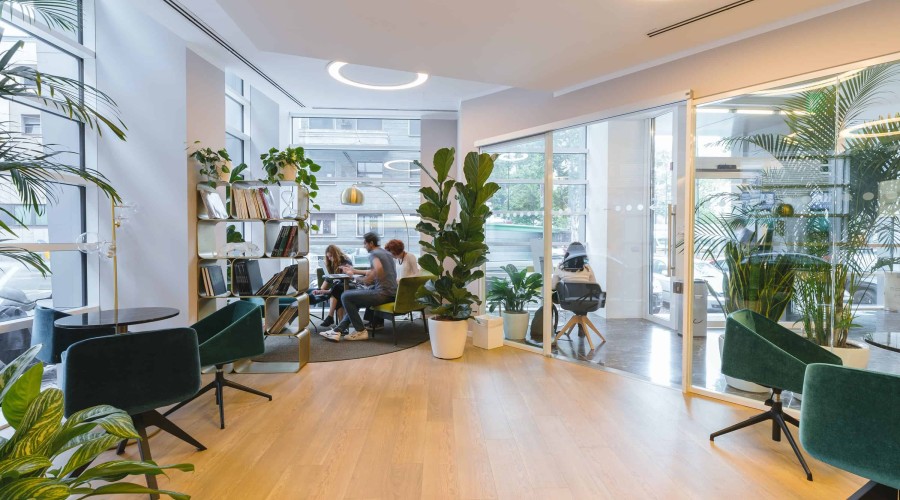
How to make your office more sustainable in 2025 - Top 5 methods!

Today, there are less and fewer businesses that do not prioritize CSR, care about being accountable to their stakeholders, invest in green initiatives, or work to improve their sustainability. However, for this to be a two-way process, it must be successful.
Indeed, we devote a significant portion of our lives to our workplaces. As a result, a significant portion of our environmental effect occurs when we are at work. Therefore, it is important that we choose our everyday tasks in a way that enables us to effectively contribute to the shift to a world that is more just and accountable.
What is sustainability?
In order to be sustainable, a balance must be struck between economic development, environmental protection, and social well-being. Current demands must be met without compromising those of future generations.
How important is sustainability?
Sustainability has a lot of advantages, both now and in the future. If there are not more sustainable decisions taken, we won't be able to protect our planet's ecosystems or carry on as we already do. It's conceivable that humanity will run out of fossil fuels, many animal species will go extinct, and the atmosphere will be permanently harmed if detrimental processes are kept up without any changes.
Sustainability enhances our quality of life, maintains our ecology, and safeguards natural resources for future generations. In the business sector, sustainability relates to a company's holistic strategy, which considers everything from manufacturing to logistics to customer service. For these reasons, this blog will show you possible ways on how to make your office more sustainable.
How to make your office more sustainable?

1. Limit the use of paper
How to make your office more sustainable? Limit the use of paper! Although our society is more reliant on modern technology than ever before, many workplaces still use paper or other tactile forms of documentation. Paper-based records are not only less secure than digital ones, but they can also add to office clutter. That's before you consider the negative effects using so much paper has on the environment each day. Try to digitize everything as much as you can.
According to The World Counts, wasted paper and paperboard accounts for around 26% of garbage disposed in landfills. A nine-square-foot file cabinet can contain around 10,000 papers, which is the same number as the average office worker consumes each year. Paper use doubles every four years for the average firm, increasing by roughly 22% every year. Approximately 45% of paper printed by office workers ends up in the rubbish can rather than the recycling bin. Every year, this equates to around 12.1 trillion sheets of paper.
2. Motivate and inspire a green approach
Using a private vehicle to travel to and from work produces harmful gas emissions for the environment. In addition, a large portion of the city traffic and road congestion that frequently disrupt workdays is caused by private vehicles. Encourage your staff to carpool or take public transportation to work. You can encourage staff by simply placing some posters around the office about ways to reduce their carbon footprint.
3. Recycle Office Waste
When we are at work, we frequently forget all the fantastic recycling practices we have at home. Therefore, putting a stop to this habit would be a straightforward step toward becoming a more sustainable employee. Ensure that your personnel are informed of the recycling regulations in your town and that you have recycling containers that are clearly marked and widely spaced.
Just like previously mentioned you can put posters up on the wall about how to make the office a more sustainable working environment.
4. Consider Eco-friendly and waste-reduction measures
Consider eco-friendly initiatives you can perform by saving electricity. Like switching off the lights when you leave the bathroom, for instance. or adjusting your heating to the temperature outside (if the weather is good, there is no need for heating).
If you can, pick equipment with an environmentally friendly design. Purchase laptops and screens that have an A+ energy certification since they use less electricity. Replace your lighting with LEDs, which are far more effective. Purchase paper that has been recycled or comes from forests that are responsibly managed. Simply put, opt for eco-friendly products and materials.
LED lights are far more energy efficient than previous forms of lighting. LED lighting items for the home use at least 75% less energy than incandescent or CFL lighting products. In reality, most LED light bulbs consume just two to seventeen watts of power, which is 60% to 90% less than incandescent or CFL illumination.
LED lighting's environmental benefits apply to the manufacturing process as well. Many classic lighting sources, such as fluorescent lighting and mercury vapor lamps, incorporate mercury into their design. As a result, as they near the end of their lives, they require particular care. With LED lights, you don't have to worry about any of these difficulties.
5. Contribute to the circular economy
According to the circular economy, we should discard items that would otherwise end up in the trash and instead repair, reuse, and recycle them. In other words, whether it's any electrical equipment, your batteries, bulbs, office supplies, plastic bottles, and cups... If something can be corrected, do it rather than adding to deforestation by buying more technology.
There is undoubtedly a better exit strategy and end of life cycle for office supplies or technology. From repairing and maintaining them to repurposing them or making them available for artistic uses. Be careful with your trash; it might not actually need to be trash.
How to make your office more sustainable: conclusion
There are several strategies to develop more sustainable practices inside your company. It is not only a wise business decision, but it is also a fantastic method to help the environment. This change will be greatly appreciated by your staff.


